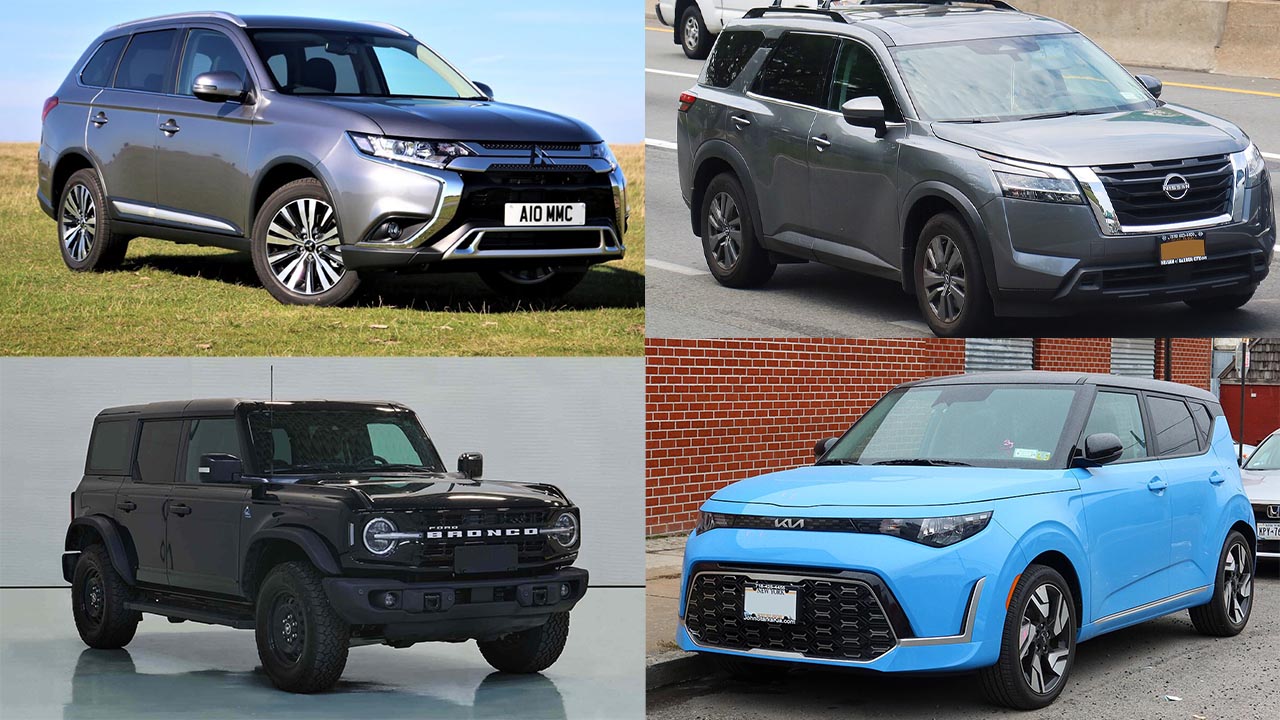No, these vehicles aren’t going to slice through the air like a hot knife through butter; aerodynamics is not their strong point.
Despite their large, bulky appearance, which might seem out of place in an era that increasingly values efficiency, square cars still hold a certain appeal.
While undeniably quirky, these boxy rides also exude a sense of style that’s hard to overlook. While many car manufacturers compete to reduce drag coefficients, several brands still prioritize spaciousness and versatility, even if it means sacrificing a bit of fuel efficiency.
To put it simply, a square car is one that embraces a primarily angular design; it’s essentially a box on wheels. With sharp lines, defined corners, and a wealth of right angles, it offers an almost brutalist approach to mobility.
For many, this is how a proper machine should appear, not a romanticized or even sensual object with curves and gentle slopes. After all, the earliest automobiles were based on a square design, with upright sides and flat tops.
The first land vehicles to embrace the concept of streamlining designing in a way to minimize wind resistance were trains.
The first attempt came in 1905 with the McKeen rail motorcars, which featured a “wind splitter” front that resembled a vertical wedge. By the 1930s, high-speed trains began adopting a more rounded shape for better aerodynamics.
In the same period, automakers started shaping their vehicles to reduce wind resistance. Chrysler led the way with the introduction of the Airflow, a full-sized model.
The Airflow was developed after wind tunnel tests, with input from Orville Wright (yes, that Orville Wright). Chrysler engineers had found that existing two-box designs were more aerodynamic when driven in reverse.
Unfortunately, poor public reception led to disappointing sales, and Chrysler had to compromise the model’s innovative design multiple times to cater to consumer expectations. As a result, the Airflow was produced for only three years, from 1934 to 1937.
Also Read: 10 Most Reliable Cars With AWD Systems on the Market
Angular Automobiles Take Over
A similar story unfolded for other manufacturers, as customers preferred larger, boxier models that offered more interior space.
Generous headroom and legroom were critical, and fuel economy wasn’t a major concern especially in the 1950s and 1960s, when fuel prices were low.
For the next two decades, the market in the US was dominated by boxy cars, and consumers wouldn’t have it any other way.
It didn’t matter whether people were after a sedan, hatchback, pickup truck, SUV, or minivan; cars with flat sides and straight edges were the norm.
The oil crisis of the 1970s forced automakers to shift focus towards efficiency over power, but exterior designs largely remained the same.
It wasn’t until the early 1980s that curved design trends, which were emerging in Europe, started making their way into North America.
This new style was often associated with luxury, especially with brands like BMW, Mercedes-Benz, and Porsche embracing the more aerodynamic look.
Holding On In A New Era
Despite the trend toward sleeker, more curved designs, square cars are still present today. The boxy design is particularly prominent on SUVs, crossovers, pickups, and even muscle cars.
In Japan, the boxy aesthetic remains a key feature of the Kei class of vehicles, though curved and slanted glass panels have largely replaced upright windshields.
For some current models, the squared look is a nod to heritage, while others target younger buyers drawn to retro designs. If you’re someone who prefers standing out from the crowd of sleek, curvy cars, here are 10 of the most popular square cars available today.
1. Land Rover Defender
The current Land Rover Defender is a revival of the iconic nameplate, marking its first all-new release since 1983. It’s also the first fully new version, as the original Land Rover Series vehicle predates the Defender by 35 years.
The new Defender takes a bold departure from its predecessor with a unibody design, replacing the traditional ladder-frame chassis.
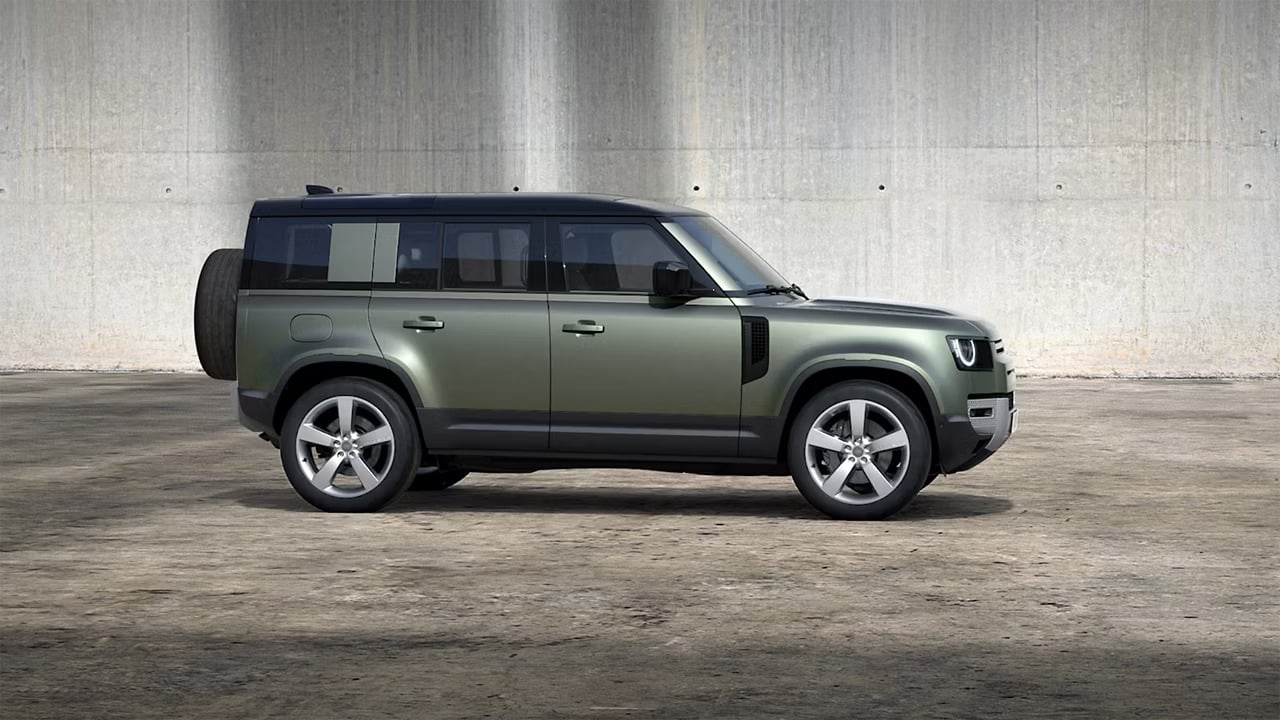
This change has made the Defender significantly more luxurious and comfortable, offering a smoother ride on paved roads while still retaining the off-road capabilities the original was known for.
The Defender’s boxy shape is evident across its 90, 110, and 130 variants, offering up to 40.6 inches of front headroom, 40.4 inches of rear headroom, 30.6 inches of legroom, and a maximum cargo volume of 80.9 cubic feet.
2. Hyundai Venue
For those seeking a reliable urban vehicle, the Hyundai Venue proves to be a great choice. Beneath its boxy exterior, the Venue is built on the same platform as the Accent subcompact sedan, but features a two-box body style that allows for additional cargo space behind the second-row seats.
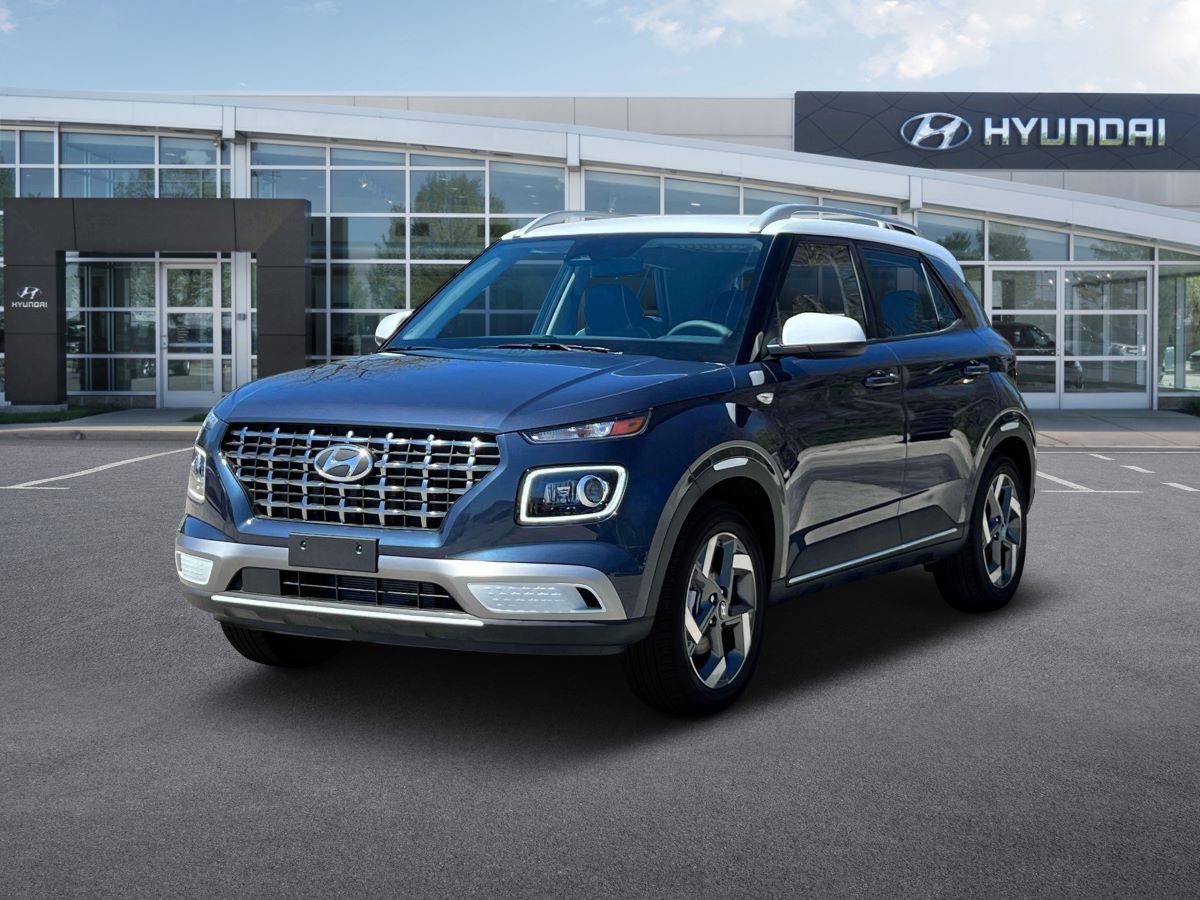
The Venue is powered by a 1.6-liter inline-4 engine, producing 121 horsepower, and is paired with an Intelligent Variable Transmission. While it’s not a high-performance vehicle, the Venue’s blocky design makes no attempt to disguise this fact.
Despite its compact size, the Venue offers surprising interior space, with 38.4 inches of front headroom, 38.6 inches of rear headroom, and up to 41.3 inches of legroom. The cargo area provides a maximum capacity of 31.9 cubic feet.
Also Read: 10 Best Practices to Keep Your Engine Running Like New in High-Performance Motorsport Vehicles
3. Mitsubishi Outlander
The current Mitsubishi Outlander presents a more angular exterior design compared to its predecessor, with a more prominent Dynamic Shield grille.
It also draws design inspiration from the Nissan Rogue and is the first Mitsubishi vehicle built on the Common Module Family (CMF) platform, a shared platform with Nissan and Renault.
The Outlander stands out in the compact crossover category due to its three rows of seating, with at least eight trim options available. The front legroom measures 41.7 inches, and folding both the second and third rows creates up to 79.7 cubic feet of cargo space.
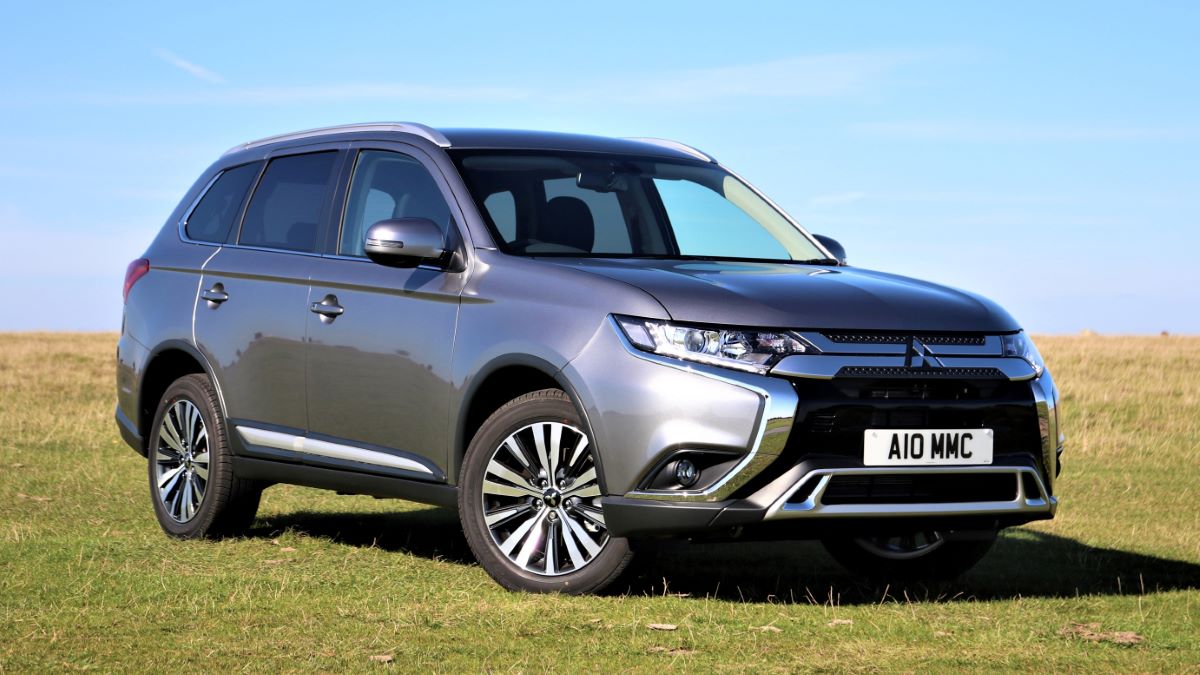
The Outlander performs best when selected as a plug-in hybrid. With a 2.4-liter combustion engine paired with a hybrid system, it generates 248 horsepower and 332 lb-ft of torque, offering a 42-mile all-electric driving range.
For those who plan to venture off-road, the Outlander is available with the Super All-Wheel Control (S-AWC) option.
4. Land Rover Discovery
The Land Rover Discovery, a full-size SUV, has evolved significantly throughout its journey as an off-road-ready family vehicle, transitioning from an affordable alternative to the Range Rover to becoming an upscale model in its own right.
Built on the D7u platform, which has been in use since 2017, the Discovery’s angular design may be getting a bit dated, yet the “Disco” remains an eye-catching presence both on the road and off the beaten path.
Inside, the Discovery offers 39.4 inches of headroom for both the front and second rows, with this measurement increasing to 40 inches when equipped with the available Panoramic Roof.
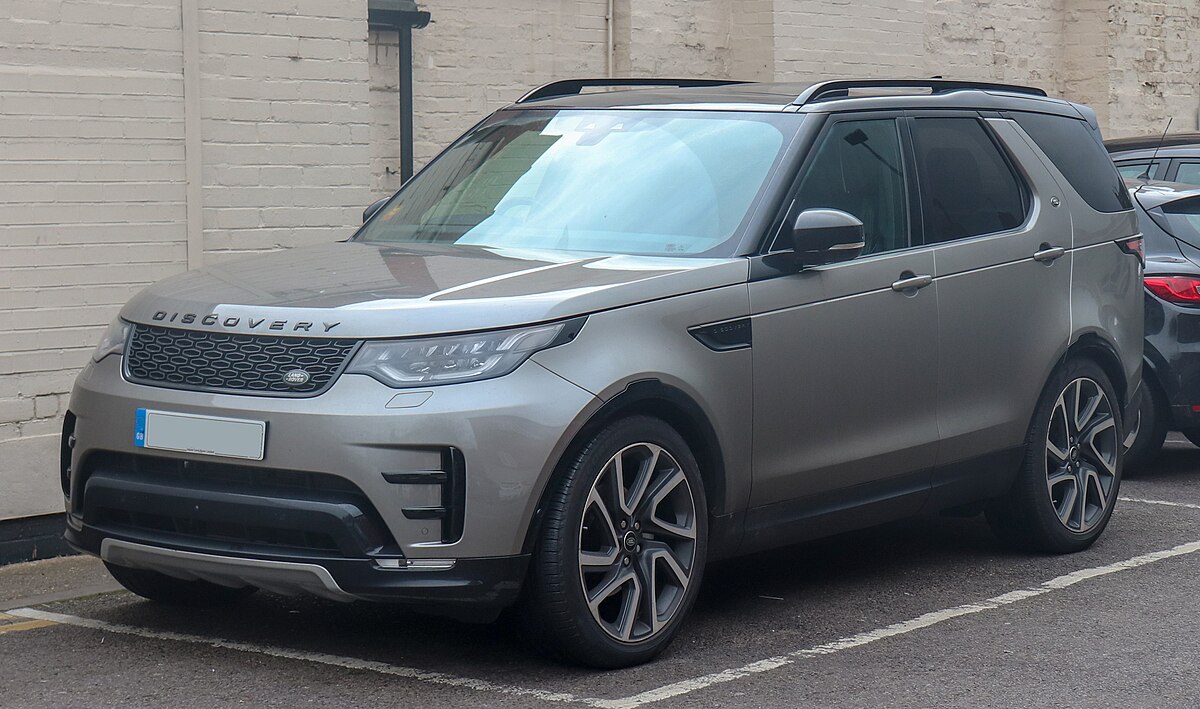
The front legroom measures 39.1 inches, while the third row offers 33.5 inches of legroom. When the second and third rows are folded down, the vehicle provides up to 74.3 cubic feet of cargo capacity.
The standard four-wheel drive system is powered by either a 2.0-liter P300 gasoline engine or a 3.0-liter inline-six engine with mild-hybrid capabilities. The updated design of the current fifth generation adds to the vehicle’s appeal.
5. Nissan Pathfinder
The fifth-generation Nissan Pathfinder, which continues to use the Nissan D platform from the previous generation, presents a more assertive appearance with its enlarged V-motion grille and elevated fascia.
Inside the boxy design of this midsize crossover, there is seating for up to eight passengers, or seven when opting for second-row captain’s chairs.
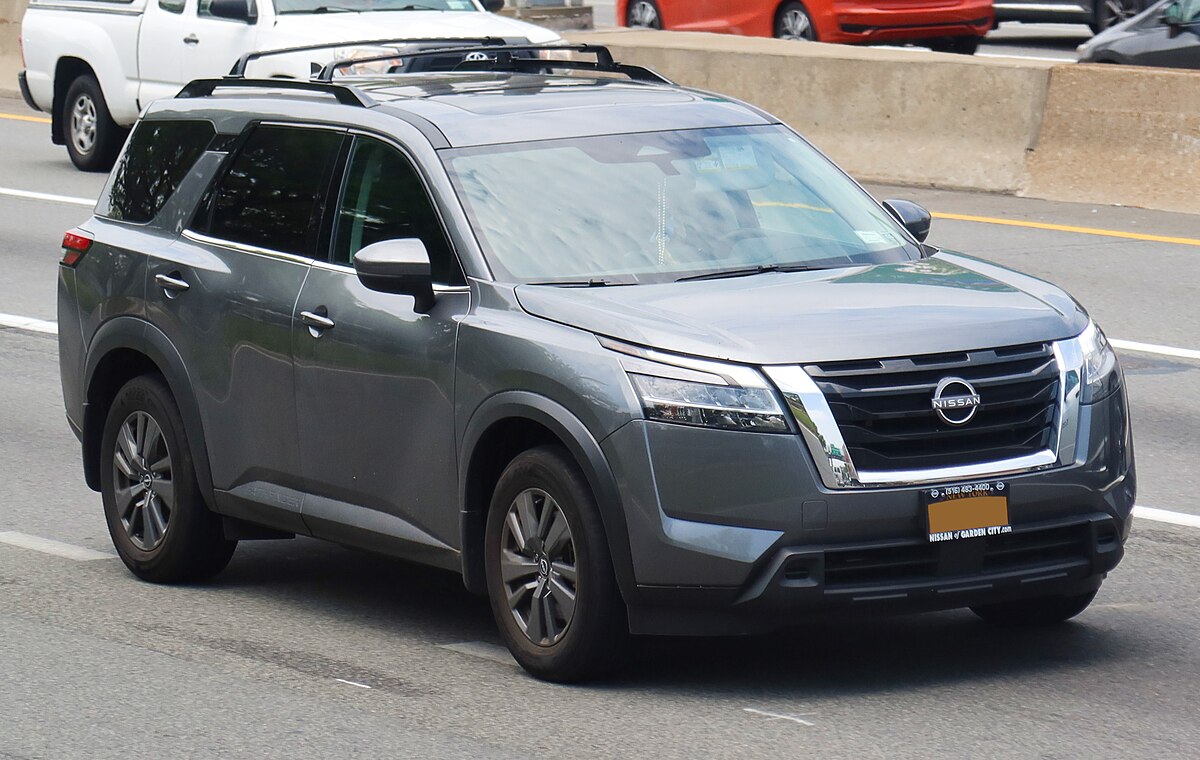
A benefit of the square design is the spacious cargo area, offering up to 16.6 cubic feet of rear storage, which can be expanded to 80.5 cubic feet by folding the second and third rows.
The Pathfinder comes in up to nine trim levels and is powered by a 3.5-liter V6 engine that produces 284 horsepower.
This engine is paired with an Intelligent 4×4 drivetrain and a nine-speed automatic transmission, which replaces the previous Xtronic continuously variable transmission.
6. Jeep Gladiator
While the Jeep Gladiator shares a resemblance with the Wrangler, Jeep asserts that it is more than just a midsize SUV with a pickup bed added to the rear it’s an entirely new category of off-road vehicle.
The Gladiator is not merely a throwback to its 1980s-era SUV sibling but a revival of the original pickup-styled nameplate introduced in 1962, which was even used as a military vehicle by various armed forces.
In addition to its increased utility, the Gladiator maintains the rugged characteristics of the Wrangler, offering a similar combination of robustness and unruliness.
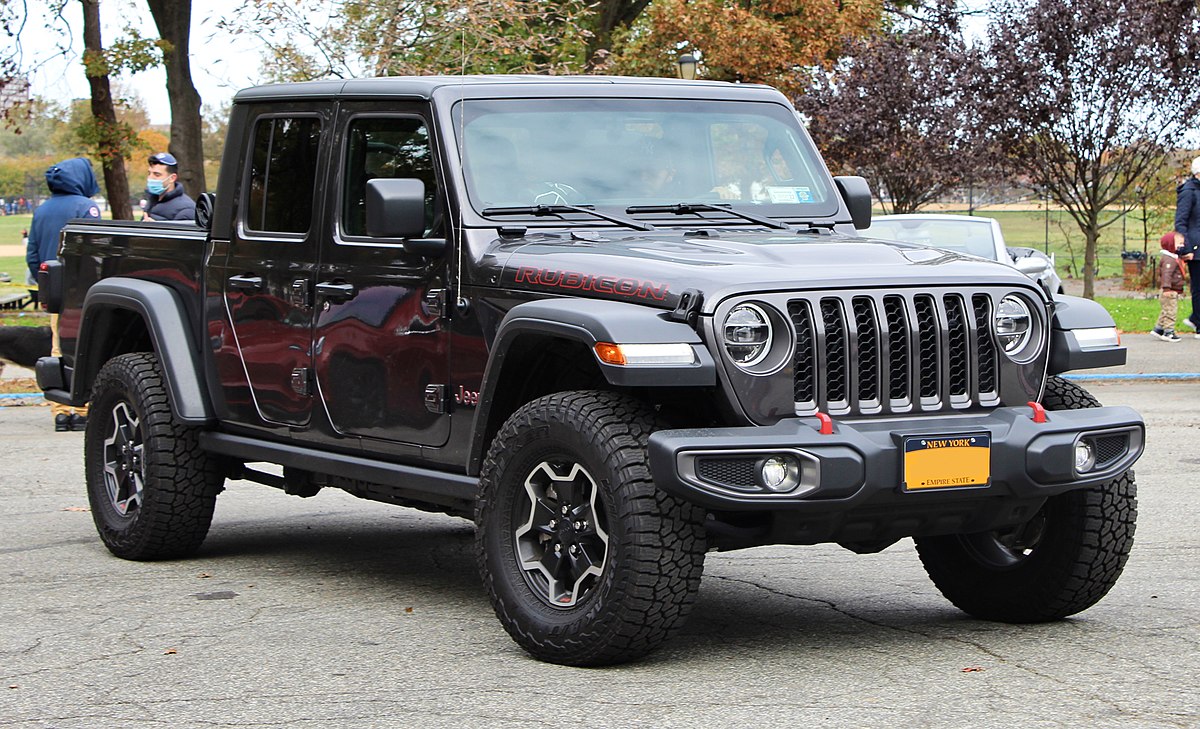
On the positive side, the onboard Uconnect interface is more refined, and the removable doors and roof are a notable feature for those looking to push the boundaries of adventure.
The Gladiator is offered with two V6 engine options gasoline and diesel that produce up to 285 horsepower and 442 lb-ft of torque. Additionally, a range of Jeep 4×4 systems is available to enhance its off-road capabilities.
The Gladiator’s robust design is reflected in its measurements, starting with a 137.3-inch wheelbase. Front and rear occupants enjoy 42.8 inches of headroom, with legroom measuring 41.2 inches. The total passenger volume across five seats is 103 cubic feet.
7. Ford Bronco
Two years after its highly anticipated return in 2021 following a 25-year hiatus, the Ford Bronco remains one of the best-selling vehicles in the market, largely driven by a sense of nostalgia.
This midsize SUV is available in both a three-door and a larger five-door version, with the option to remove their tops.
Competing with the Jeep Wrangler, the Bronco also features removable doors that can be conveniently stowed on the vehicle itself.
Inside, customers can enjoy up to 43.3 inches of front headroom and 43.1 inches of legroom, along with a generous 88.3 cubic feet of cargo space when the rear seats are folded down.
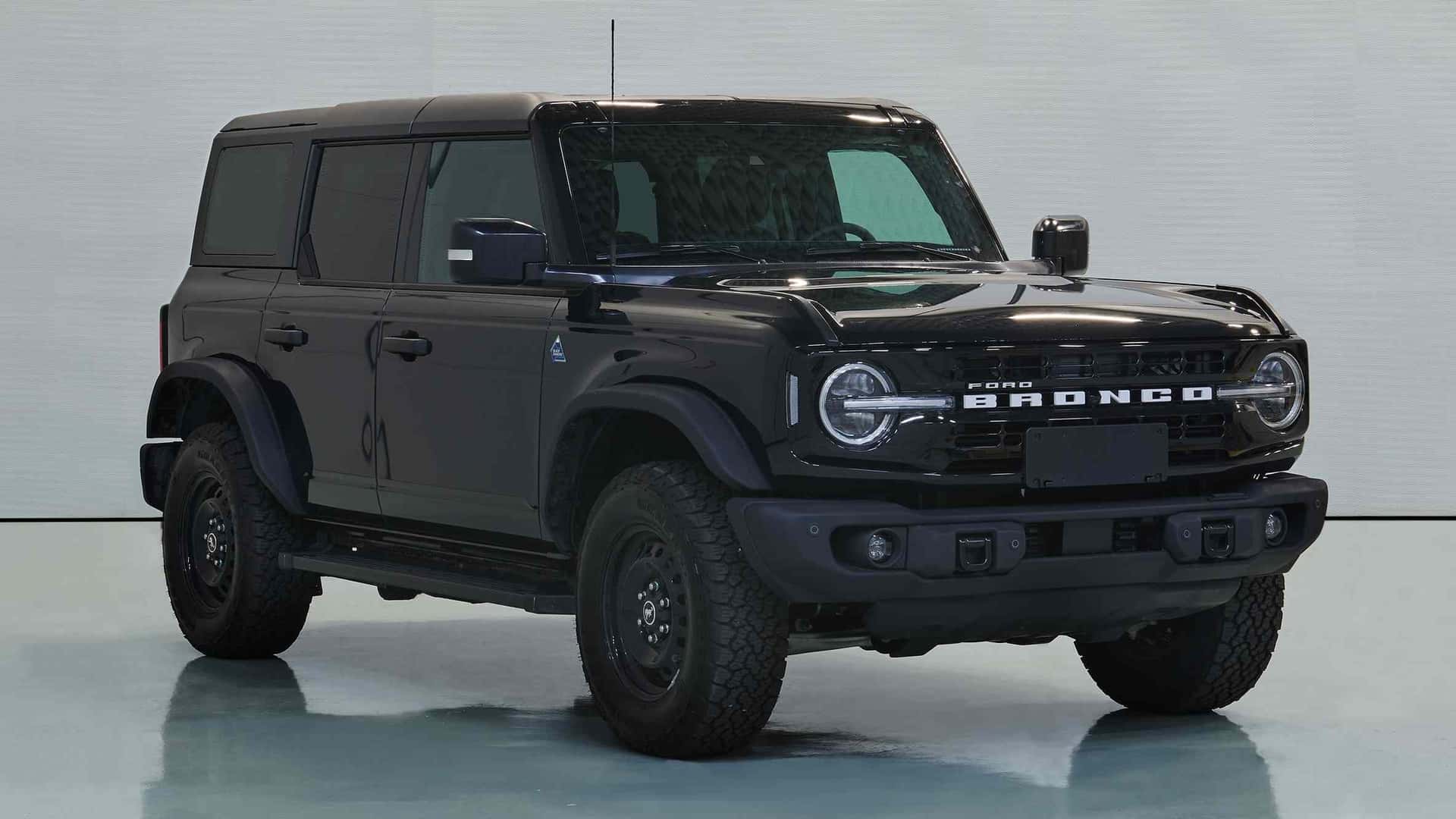
The Bronco offers three gasoline engine choices, including a robust 3.0L V6 that delivers 400 horsepower.
In addition to a 10-speed automatic transmission, Ford continues to offer the option of a seven-speed Getrag manual transmission, which combines six forward gears with a special “crawler” gear for tackling more rugged terrain.
The Bronco’s body-on-frame construction is further enhanced by the Sasquatch option package, which includes a mild suspension lift and 35-inch tires, second only to the 37-inch tires found on the Bronco Raptor.
8. Ford Bronco Sport
For those who prefer a slightly less intense version of the Bronco while still embracing the iconic nameplate, the Ford Bronco Sport offers a solid alternative.
Though it carries a retro-inspired design reminiscent of its larger counterpart, this compact crossover is built on a smaller unibody platform, providing seating for up to five passengers.
Despite its boxy appearance, the Bronco Sport is a well-rounded vehicle that combines off-road capability with features like heated seats, smartphone connectivity, and remote start.
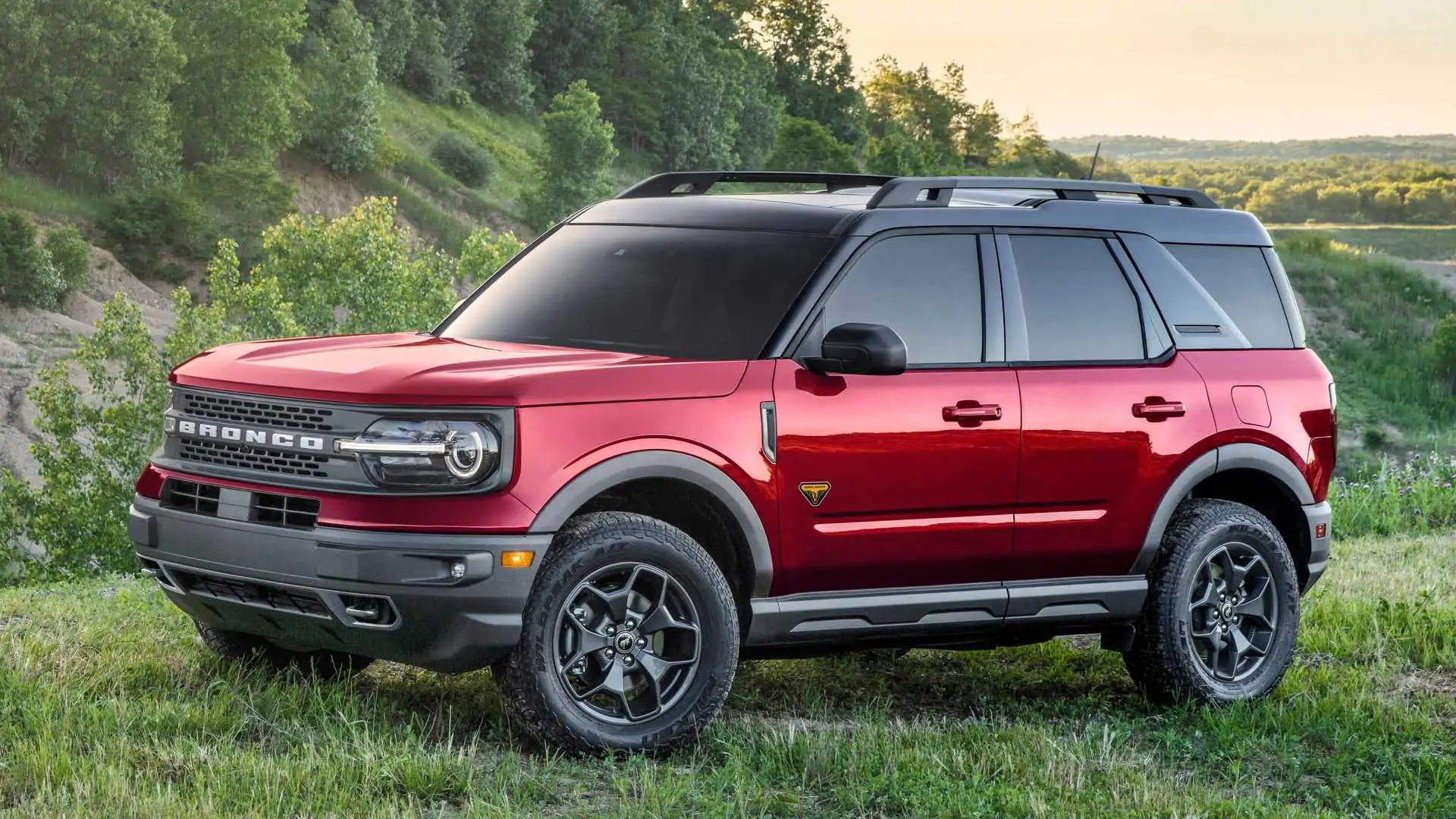
The Bronco Sport offers a spacious interior, with a total of 138.2 cubic feet of space, 105.7 cubic feet of which is dedicated to passengers. Front headroom measures 41.5 inches, while rear headroom is slightly more generous at 41.7 inches.
The front legroom reaches up to 42.4 inches, and when the rear seats are folded down, the vehicle provides up to 60.6 cubic feet of cargo space.
Available in six trim levels, the Bronco Sport is powered by either a 1.5L inline-3 or a 2.0L inline-4 Ecoboost engine, with the latter producing up to 245 horsepower.
The Bronco Sport’s design also contributes to its safety, as it received the “Top Safety Pick +” award from the Insurance Institute for Highway Safety for the 2022 model year.
9. Kia Soul
Launched in the new millennium, the Kia Soul quickly gained a reputation for its quirky, boxy proportions. Now, three generations later, the subcompact hatchback has evolved, maturing while still appealing to its youthful target audience.
At the time of its release, Kia made it clear that the Soul was designed specifically with the U.S. market in mind.
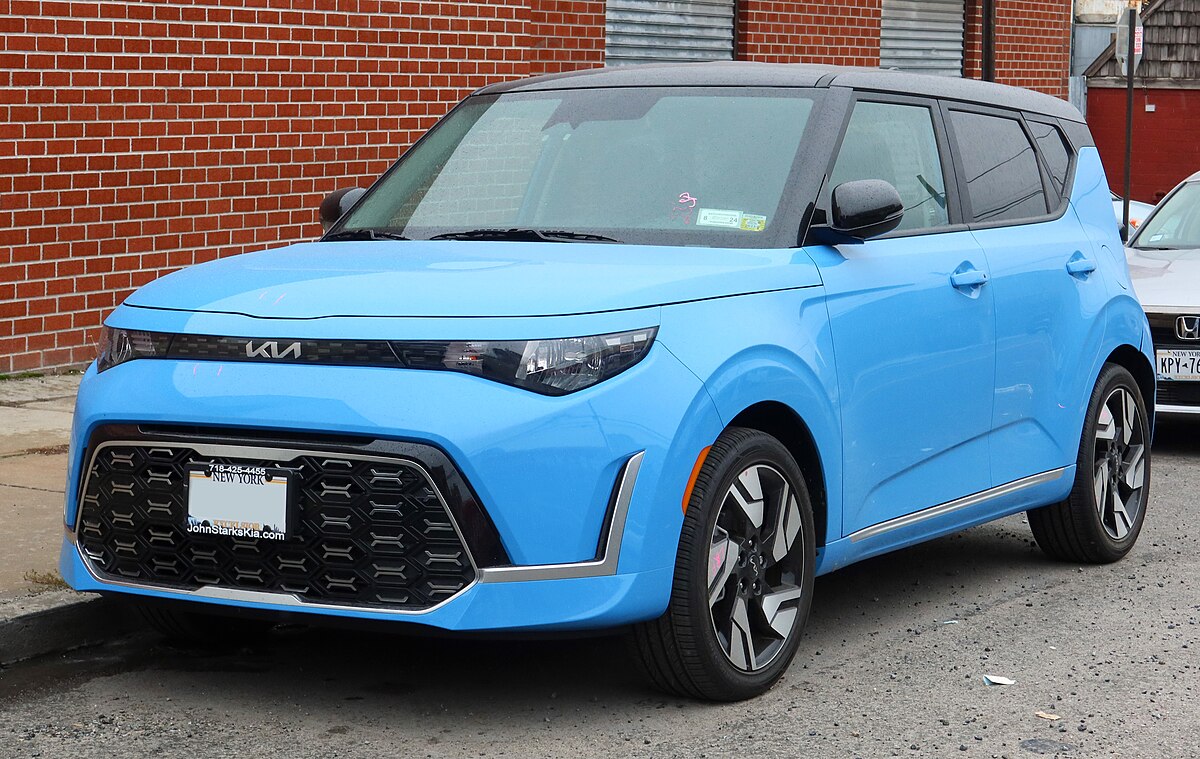
Like many vehicles with an upright design, the Soul maximizes interior space, especially in the cabin area, earning a reputation for being one of the roomiest options in its class.
The car offers up to 39.5 inches of headroom and 41.1 inches of legroom, along with 55.5 inches of shoulder room. The standard cargo capacity is 24.2 cubic feet, which expands to 62.1 cubic feet when the rear seats are folded down.
The Soul is powered by a 2.0L gasoline engine, producing 147 horsepower, while the EV version offers a more robust 201 horsepower.
10. Kia Telluride
Another standout from Kia is the Telluride, a three-row midsize crossover and the largest model offered by the automaker for the North American market, which it was specifically designed for.
The square SUV is available in four trim levels, with seating for either seven or eight passengers and a suite of user-friendly technology.
In addition to the standard model, Kia also offers the sportier X-Line and X-Pro trim levels, which feature higher ground clearance, increased towing capacity, and upgraded technology.
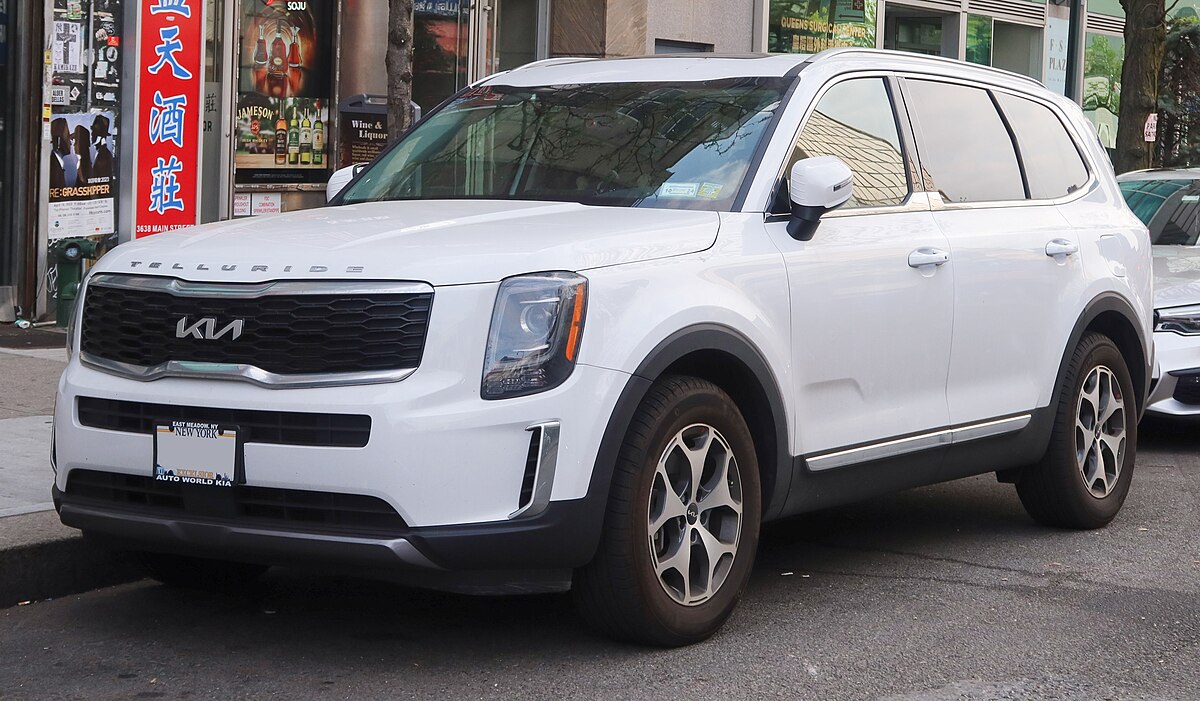
The Telluride offers up to 40.9 inches of front headroom and 40.2 inches in the rear, with a maximum of 42.4 inches of legroom.
With all seven seats occupied, the Telluride provides 21 cubic feet of cargo space, expanding to 87 cubic feet when both rows behind the front seats are folded down.
The Telluride is powered by a 3.8L direct-injection gasoline V6 engine, delivering 291 horsepower to either the front or all four wheels via an eight-speed automatic transmission.

